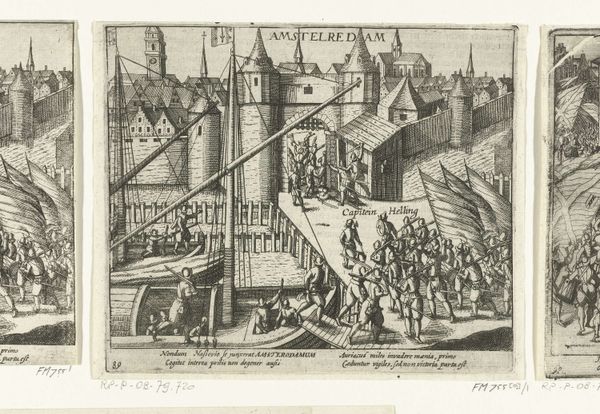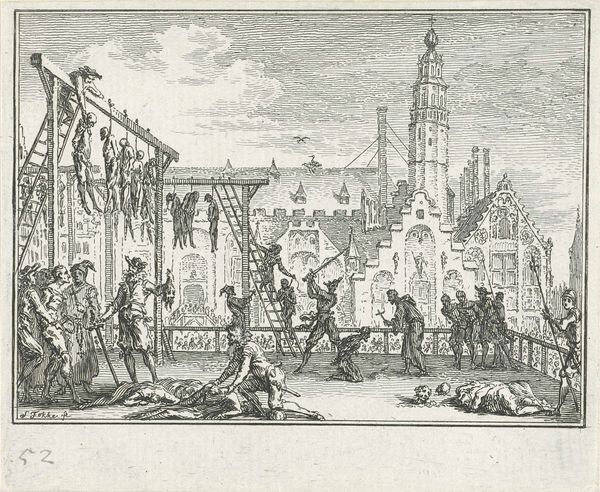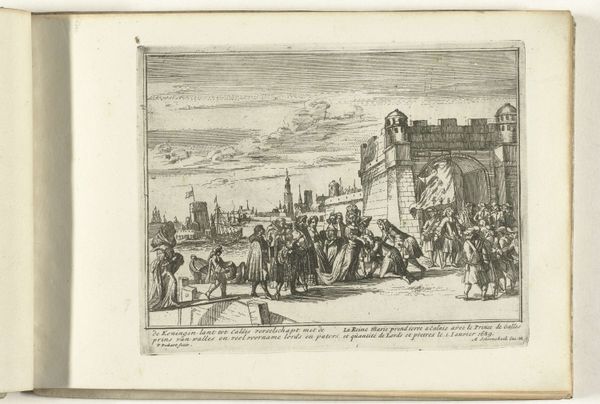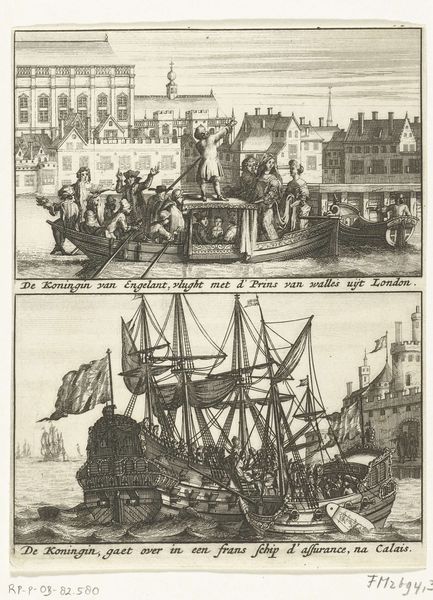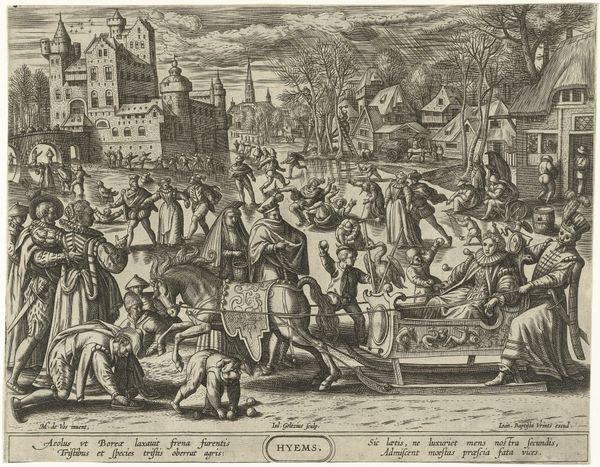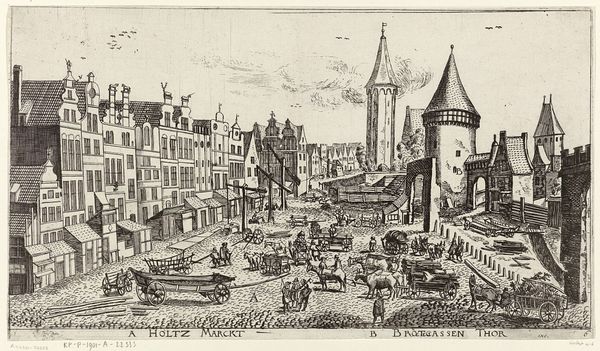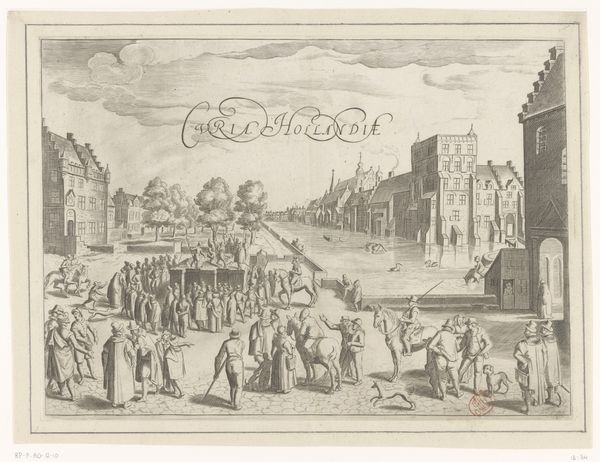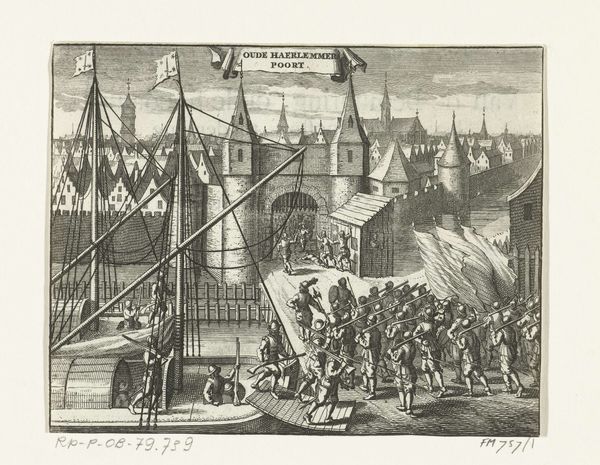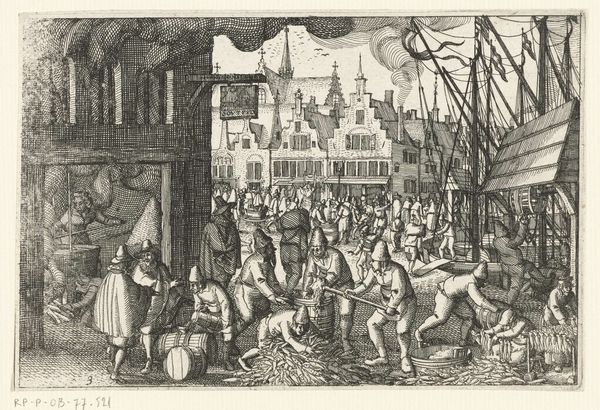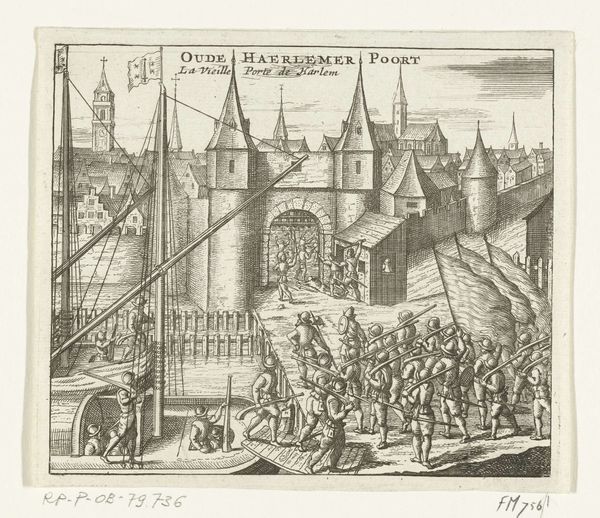
print, etching
#
baroque
# print
#
etching
#
cityscape
#
genre-painting
Dimensions: height 106 mm, width 131 mm
Copyright: Rijks Museum: Open Domain
Curator: This etching is called "Plundering van Mechelen, 1572." Although attributed to an anonymous artist, it was likely created between 1619 and 1621, quite some time after the actual historical event. What strikes you first about it? Editor: The sheer brutality of it. The chaos is palpable even in the precise lines of the etching. The looting and violence in the foreground contrast sharply with the city's architecture, as if civilization itself is being torn apart. Curator: The scene is steeped in historical context, depicting the Sack of Mechelen during the Eighty Years’ War. These events shaped national identity. Consider the figure collapsed in the lower foreground, robbed and violated – a stark visual metaphor for the suffering inflicted upon the city itself. It evokes pity but also resonates as an early symbol of resistance. Editor: That’s a fascinating point. If we examine the formal elements – the diagonal thrust of the bridge, the way the artist uses linear perspective to create depth – these visual choices guide the viewer's eye to see the organized, purposeful destruction amidst what could easily become a disorienting jumble of lines. Curator: And this relates to genre-painting traditions that romanticized conflicts but rarely captured true horrors, in effect normalizing it. It's as if the print becomes a mnemonic device, a symbol representing something to be reviled, or perhaps learned from, rather than glorified. Editor: Agreed, although the very act of depiction is where these issues diverge. It gives structure and narrative to historical tragedy and the perspective we get here reveals that this may even desensitize people or celebrate its structure and narrative. But I wonder if that makes this more or less effective overall. Curator: It invites contemplation on war’s impact. Whether normalizing or awakening to horror is secondary; the goal may simply be not to forget what happened and to reflect. A constant reminder. Editor: I see the echoes of art and trauma reverberating even now. Thank you. Curator: A fitting reflection, echoing across time.
Comments
No comments
Be the first to comment and join the conversation on the ultimate creative platform.


